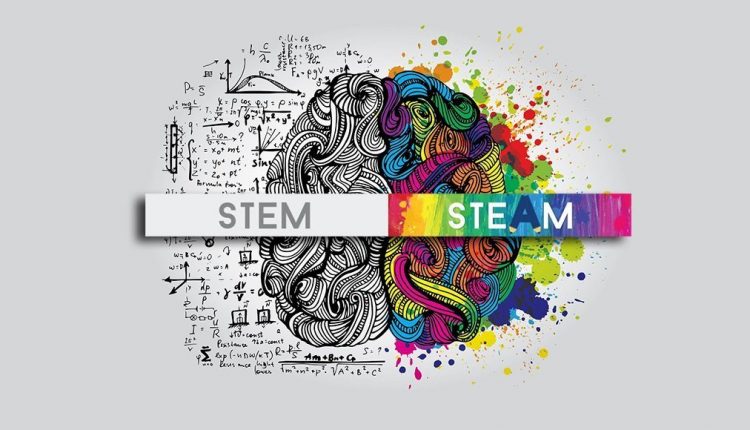SHIFT OF LEARNING APPROACH FROM STEM TO STEAM
For ages, the education system revolved around the STEM approach. Many of us are familiar with STEM, which stands for Science, Technology, Engineering, and Mathematics. STEM education helps prepare students for the knowledge-based economy, where many current and future jobs require a foundation in science and math. But in this present era, there has been an urge to improve on STEM. This is where STEAM comes to play. STEM alone misses several key components that are needed in the current scenario. The STEAM movement is an attempt to enhance the framework by invoking a greater sense of creativity. It makes kids more well-versed and creates extensive new opportunities. STEAM is an approach to education that empowers students to be curious learners who seek creative solutions to real-world problems; this helps them develop the soft and hard skills necessary to succeed in college, their careers, and wherever else life takes them.
WHAT MAKES STEM DIFFERENT FROM STEAM?
STEAM is an approach to education that applies Science, Technology, Engineering, the Arts, and Mathematics. Though it may only seem that the main difference between STEM and STEAM is the inclusion of arts but this is the element that may surprise you! The “A” actually includes the creative aspect of learning as various industries ask for professionals who are disciplined in the areas of creativity and art. Embracing the A in STEAM brings in expression, empathy, and the purpose of what you’re learning. Arts education makes learning more fun and keeps children more engaged. Incorporating the arts and sometimes humanities allow students to develop and use skills of inquiry, which are unique to the arts and humanities.
WHAT DIFFERENCE DO ARTS MAKE?
A STEM is itself an incredibly valuable education system. Science is all around us. Technology plays a key role in our lives and is always evolving. Engineering provides the fundamentals of our structures, machines, and other inventions. Mathematics helps us solve complex problems and think analytically. Together, these fields form so much of our understanding of the world and how it functions. An education grounded in science, technology, engineering, and mathematics (STEM) leads to professional and personal success. However, STEM education tends to put less focus on things like creativity and innovation and this added emphasis on the study of arts leads to STEAM.
STEAM is a way to take the benefits of STEM and complete the package by integrating the principles of application, creation, and ingenuity in and through the arts. STEAM takes STEM to the next level: it allows students to connect their learning in the critical areas together with arts practices, elements, design principles, and standards to provide the whole pallet of learning at their disposal. STEAM removes limitations and replaces them with wonder, critique, inquiry, and innovation. That’s why the “A” in STEAM is so vital. Integrating the arts into STEM allows students to master the skills which support their ability to succeed in the future. It also allows students not only to engage with their learning but also helps them in recalling and retaining the information they learned.
WHY IS STEAM SO IMPORTANT?
Employers are looking for graduates who can think critically and who are curious about the world around them. In the STEAM approach, the students aren’t just taught the subject matter, they’re taught how to ask questions, how to be innovative and how to create. This allows them to develop the ability to approach any situation with an open mind and mindset that’s immensely creative.
The four primary skill areas necessary for success in the 21st century are:
- Critical Thinking & Problem Solving
- Communication
- Collaboration
- Creativity & Innovation
Many employers are looking for graduates who can think critically and drive innovation in their respective fields. The STEM model is designed to get students “good jobs” without preparing them for jobs that don’t exist yet. By putting together elements of the humanities with STEM courses, students will be better equipped to come up with and share ideas, no matter which career they end up pursuing.
STEAM brings together the critical disciplines to create an inclusive learning environment that encourages students to participate, collaborate and solve problems. This holistic approach encourages students to exercise both the left and right sides of their brains simultaneously, as they would need to do in the 21st-century working environment.
STEAM in education is the future. With our world becoming more complex, we must know to adjust to its complexities. The students must know the way to develop the knowledge and skills to solve real-world problems and students can do exactly that with high-quality STEAM education. It empowers students to persist through obstacles and trial and error.



